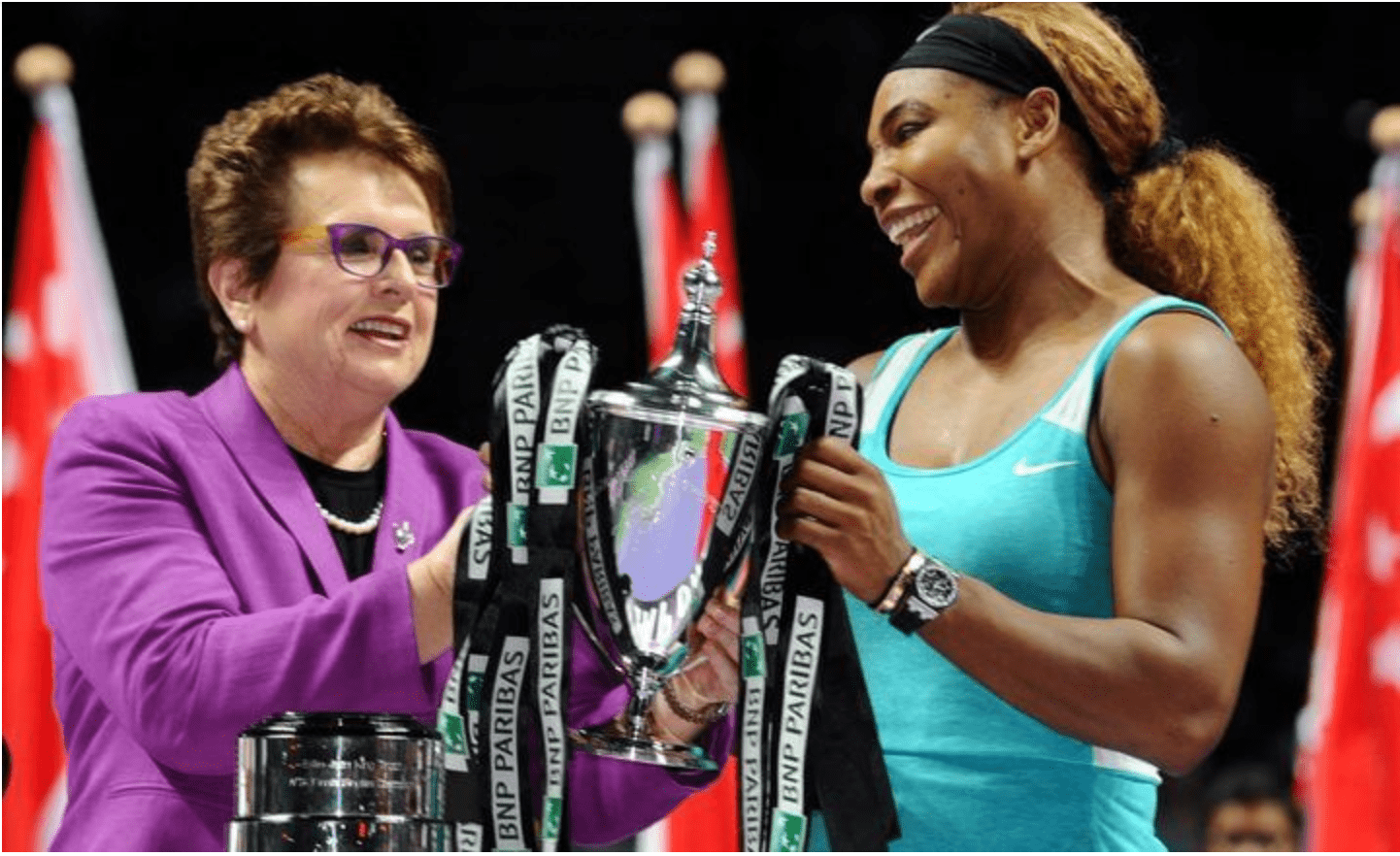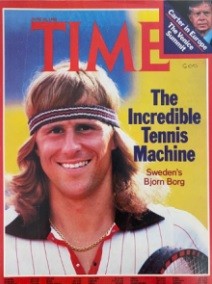Jim, John, Bjorn and the GOAT
I doubt I fully appreciated the trouble my father had gone into to secure my first ever Centre Court ticket at Wimbledon in June 1979.
I had desperately wanted to watch Bjorn Borg, my childhood hero, but instead we got his tenacious rival (pre-McEnroe), the player who invented the tennis grunt (pre-Sharapova), Jimmy Connors.
 We watched the American World No.3 come back from a set down to defeat Marty Riessen in the second round and overawed as I must have felt just being there, I probably consoled myself that there was value in watching my hero’s arch enemy close up.
We watched the American World No.3 come back from a set down to defeat Marty Riessen in the second round and overawed as I must have felt just being there, I probably consoled myself that there was value in watching my hero’s arch enemy close up.
Borg overpowered Connors in the semis and despite being pushed in the final by the freaky serves of Roscoe Tanner he went on to win his fourth Wimbledon title.
Until that moment there was really no talk of a ‘Greatest of All Time’ (GOAT). There were several ‘greats’, Perry (mostly for the British), Laver, Emerson, but no definable GOAT.
In the following year, 1980, in the second most spectacular Wimbledon final ever (the 2008 Nadal-Federer one was by far the best), Borg defeated the impertinent and painfully talented John McEnroe to win his fifth title1. People then began to talk of a GOAT.
Five Wimbledon titles in a row, the Swede was on the cusp of greatness. In its cover story in June 1980 TIME magazine asked ‘Is he the best player to ever lift a racquet?’ 2
Then, after losing to McEnroe in his sixth Wimbledon final in 1981, GOAT talk was temporarily suspended. It was permanently terminated two months later when after losing in the US Open final (again to McEnroe) Borg not only shunned the award ceremony (for which he was booed by the crowd) but left New York and walked out of professional tennis. Completely. He had won 11 Grand slams. He was 26.
By coincidence at 26, in 2012, Rafael Nadal (pictured above with Borg) had also won 11 grand slams: 7 French, 2 Wimbledon, 1 US Open and 1 Australian. He too was on the cusp of greatness, though he had to put up with (but also be thankful for) the cruising dominance of his arch rival Roger Federer who had by then won 13 grand slams. At that moment both were behind Pete Sampras’ record of 14.
Today what makes the 36-year-old Nadal a GOAT contender is not just that he leads the pack having accumulated 22 grand slams but that he has done so in a career that has spanned two decades and, crucially, he has done it despite the degenerative Mueller-Weiss Syndrome which affects his foot.
The Spaniard has played with painkillers for most of his career. “I am not injured; I am a player living with an injury” he said recently. Mueller-Weiss syndrome is a rare disease where the navicular bone in the foot undergoes spontaneous osteonecrosis. This causes blood to be cut off from the navicular bone, causing pain and deformity3.
The glamour and the prize money often obscure how excruciatingly demanding the sport is. Nowhere else do players battle it out alone for four, sometimes five hours. At best, professionals – who essentially start an intensive junior career as early as their late teens – can on average look ahead to a 12 to 15-year long career.
Nadal turned professional at 15. He has been an impeccable one for 21 years. He is the only player that has been in the Top Ten for 17 years without fail. Federer who was born the year Borg retired is 41 and intent on playing more. Serena Williams, who announced she will retire after the current US Open, dominated women’s tennis from 1999 to 2017. She won her last slam that year two months into her pregnancy. With 23 to her name, she is, for the moment, ahead of Nadal, Djokovic and Federer.
Our media induced obsession with metrics drives competition and comparisons and generates ticket sales and television viewership. Numbers sustain narratives. Records and the desire to break them prolong careers. While going for his 23rd grand slam at Wimbledon this summer Nadal had to withdraw in the semis following an abdominal tear he had picked up in the quarters. On the morning of his match, labouring over whether he should face the talented but insouciant Australian Nick Kyrgios, Nadal practiced for an hour just to test the injury. Kyrgios later admitted that he had practiced for only an hour a day leading into the championships.
Hard work and discipline are key ingredients of legendary status. What made Borg one was not the unconventionality of his strokes, the top-spin and the hockey-stick double handed backhand but his endless practicing and the cool discipline behind his stubborn desire to win. For reasons that those of us outside must acknowledge we cannot comprehend he suddenly lost that desire. Thankfully, and equally incomprehensibly, Nadal has not.
In the end the debate about the GOAT is misleading if not entirely inappropriate. There have been great players who have not broken records or reached ranking heights but who have thrilled crowds and brought change in ways that are less technical or statistical but certainly more significant. Arthur Ash, Martina Navratilova, Yannick Noah and Billie Jean King come to mind.
Their sporting lives were battles not just against their opponents across the net but wars of attrition against institutional discrimination and prejudice. Their grinding victories on issues of gender and race demanded a whole lot more than just talent and on-court hard work. The impact their careers have had goes well beyond the sport.
Perhaps instead of counting titles and tracking rankings we should focus on the greatest impact OAT. In which case, much as I admired Borg and continue to root for Nadal, Billie Jean King and Serena Williams are the clear winners – racquets down.

Notes:
1 – https://www.youtube.com/watch?v=UnwYdF8a5ws
2 – TIME magazine June 1980:

3 https://www.orpha.net/consor/cgi-bin/OC_Exp.php?lng=en&Expert=566943
